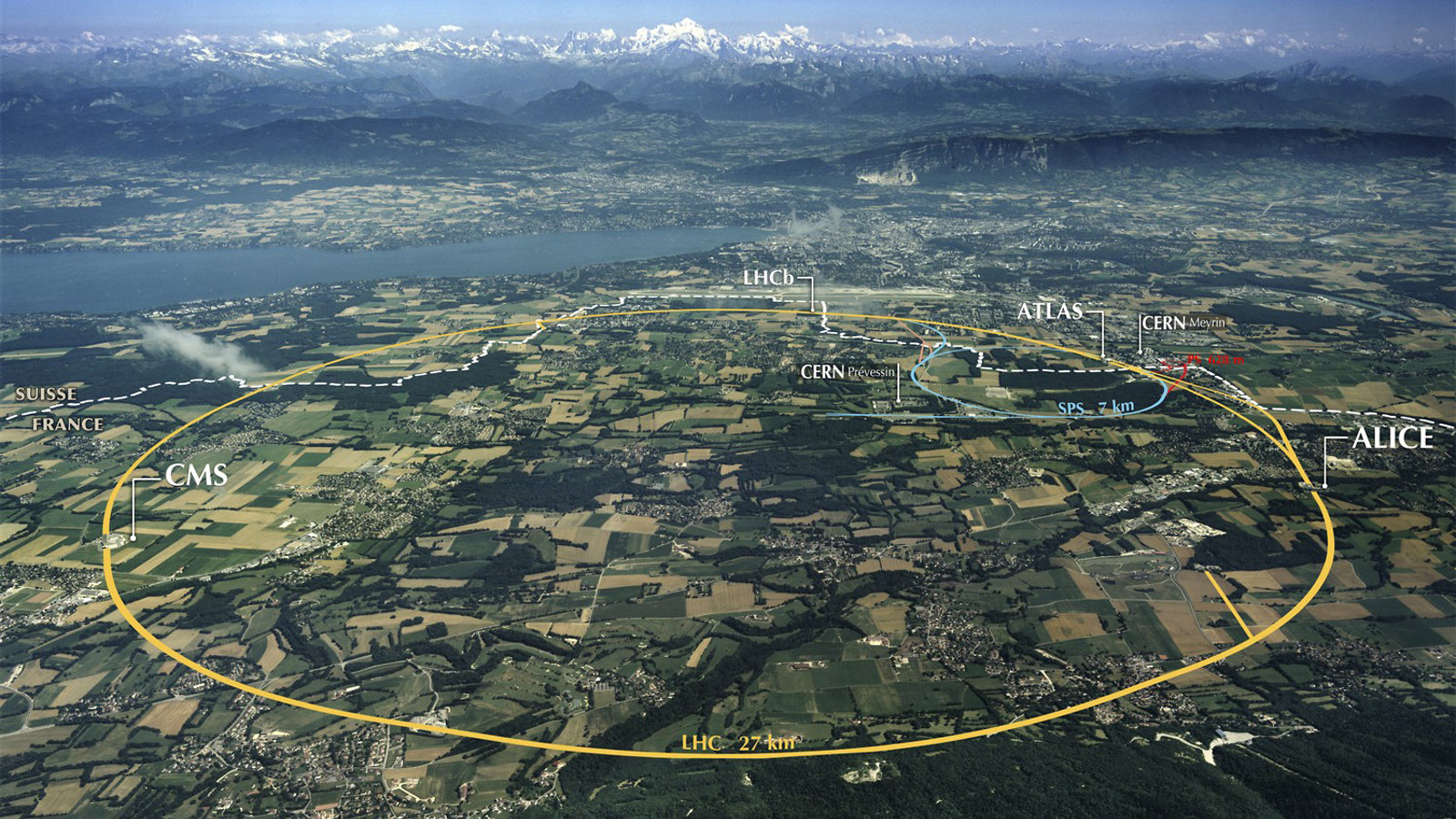
The Large Hadron Collider is the world's most powerful particle accelerator. In June 2015, the LHC was restarted at nearly twice the energy at which it operated
during its first run, which ended in 2013. Credit: CERN



Thee are 3 or 4 interesting-looking short video clips at the link to go with the article.
In my mind the LHC has been a huge disappointment. It further confirmed the dominant Standard Model with the discovery of the Higgs Boson but so far no evidence of where to go beyond the Standard Model.
The Large Hadron Collider (LHC) is the world’s largest and most powerful particle accelerator.
It first started up on 10 September 2008, and remains the latest addition to CERN’s accelerator complex.
The LHC consists of a 27-kilometre ring of superconducting magnets with a number of accelerating structures to boost the energy of the particles along the way.
Inside the accelerator, two high-energy particle beams travel at close to the speed of light before they are made to collide. The beams travel in opposite directions in separate beam pipes – two tubes kept at ultrahigh vacuum.
They are guided around the accelerator ring by a strong magnetic field maintained by superconducting electromagnets. The electromagnets are built from coils of special electric cable that operates in a superconducting state, efficiently conducting electricity without resistance or loss of energy. This requires chilling the magnets to -271.3°C – a temperature colder than outer space. For this reason, much of the accelerator is connected to a distribution system of liquid helium, which cools the magnets, as well as to other supply services.
Thousands of magnets of different varieties and sizes are used to direct the beams around the accelerator. These include 1232 dipole magnets 15 metres in length which bend the beams, and 392 quadrupole magnets, each 5–7 metres long, which focus the beams.
Just prior to collision, another type of magnet is used to “squeeze” the particles closer together to increase the chances of collisions. The particles are so tiny that the task of making them collide is akin to firing two needles 10 kilometres apart with such precision that they meet halfway.
All the controls for the accelerator, its services and technical infrastructure are housed under one roof at the CERN Control Centre. From here, the beams inside the LHC are made to collide at four locations around the accelerator ring, corresponding to the positions of four particle detectors – ATLAS, CMS, ALICE and LHCb.
https://home.cern/topics/large-hadron-collider
For cyclic electron accelerators, a limit on practical bend radius is placed by synchrotron radiation losses and the next generation will probably be linear accelerators 10 times the current length. An example of such a next generation electron accelerator is the proposed 40 km long International Linear Collider.
It is believed that plasma wakefield acceleration in the form of electron-beam ‘afterburners’ and standalone laser pulsers might be able to provide dramatic increases in efficiency over RF accelerators within two to three decades. In plasma wakefield accelerators, the beam cavity is filled with a plasma (rather than vacuum). A short pulse of electrons or laser light either constitutes or immediately precedes the particles that are being accelerated. The pulse disrupts the plasma, causing the charged particles in the plasma to integrate into and move toward the rear of the bunch of particles that are being accelerated. This process transfers energy to the particle bunch, accelerating it further, and continues as long as the pulse is coherent.[24]
Energy gradients as steep as 200 GeV/m have been achieved over millimeter-scale distances using laser pulsers[25] and gradients approaching 1 GeV/m are being produced on the multi-centimeter-scale with electron-beam systems, in contrast to a limit of about 0.1 GeV/m for radio-frequency acceleration alone. Existing electron accelerators such as SLAC could use electron-beam afterburners to greatly increase the energy of their particle beams, at the cost of beam intensity.
Electron systems in general can provide tightly collimated, reliable beams; laser systems may offer more power and compactness. Thus, plasma wakefield accelerators could be used – if technical issues can be resolved – to both increase the maximum energy of the largest accelerators and to bring high energies into university laboratories and medical centres.
Higher than 0.25 GeV/m gradients have been achieved by a dielectric laser accelerator, which may present another viable approach to building compact high-energy accelerators.[26]
https://en.wikipedia.org/wiki/Particle_accelerator#Higher_energies
Have fun with this one on dark things happening at CERN:
https://www.youtube.com/watch?v=M5cmp5wdKbM
How much did it cost us, and has it paid for itself?
Yes, I'm kidding.
Maybe.
This the place where they are gonna make a Black Hole that’s gonna make us all disappear in a blink of an eye ??
Would have been here in the USA, in Texas. But Congress killed it. Need to waste money on Pakistan, Crapistan, illegal alien welfare, lesbian studies, mating habits of gay tree frogs... etc.